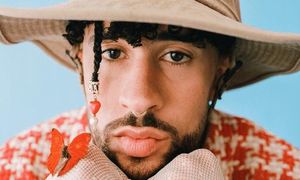Australians are increasingly turning away from the traditional two-party political system, signaling a shift that could reshape the nation’s political landscape for years to come. This sentiment was echoed by Simon Holmes a Court, the founder of Climate 200, who stated that independents are poised to flourish in the wake of the recent federal elections held on May 3, 2025.
According to Holmes a Court, approximately one million voters opted for independent candidates during the elections, a clear indication that one-third of Australians are no longer supporting either major party. "We are rejecting the old political system," he asserted during a TEDx event in Sydney, highlighting a dramatic shift in voter preferences.
Climate 200 supported 35 "community candidates" in the election, including notable teal independents such as Zoe Daniel, Monique Ryan, Sophie Scamps, and Allegra Spender. However, not all candidates met expectations. Zoe Daniel lost her seat in Goldstein to Liberal candidate Tim Wilson, while the outcome in Ryan's former stronghold of Kooyong remains too close to call. In Sydney's Bradfield, teal challenger Nicolette Boele is currently neck and neck with Liberal Gisele Kapterian as vote counting continues.
Despite some setbacks, Holmes a Court noted that around one-in-four electorates had an independent candidate on the ballot, suggesting that the movement is gaining traction. He mentioned, "We’re on track to see the lowest vote for the major parties in history and the highest vote for independents." This growing trend has roots in previous successful campaigns, such as Cathy McGowan's victory in Indi in 2013 and Zali Steggall's win against former Prime Minister Tony Abbott in Warringah in 2019.
In this context of evolving political dynamics, the role of third-party interest groups has also become increasingly significant. A recent analysis by Guardian Australia revealed that over $7 million was spent on social media advertising by 15 different interest groups during the five-week campaign. Of this total, at least $1.6 million was targeted at the 30 most hotly contested seats, showcasing the growing influence of targeted messaging.
Marketing professor Andrew Hughes noted that while third-party ads can subtly sway voters, their effectiveness varies widely based on voter attitudes towards the brand and the ad's content. "Third-party advertising is really handy for a major party because they add credibility and authenticity to a message," he explained. However, if voters dislike the brand, the ads may not have the desired impact.
Right-wing activist group Advance has emerged as a formidable player in the political advertising landscape, raising $15.6 million in donations during the 2023-24 financial year. The group spent $1.7 million on social media advertising, with a significant portion aimed at key seats where the Greens were seen as competitive. An Advance spokesperson claimed, "We have destroyed the Greens," pointing to declines in their primary votes in various electorates.
Other right-leaning organizations, such as Better Australia and Australians for Prosperity, also targeted Greens and teal independents. Better Australia spent $373,209 on social media ads, while Australians for Prosperity allocated $414,903 to focus on economic issues in inner-city seats. The Australian Taxpayers’ Alliance contributed $597,758, targeting marginal Labor seats in several electorates.
On the left side of the political spectrum, unions and progressive groups also made their presence felt. The Australian Unions and United Workers Union collectively spent $1.85 million, with a focus on geo-targeted ads on platforms like YouTube and Meta. Their efforts were concentrated in electorates such as Bruce, Dunkley, and McEwen, where they hoped to sway voter opinion.
In addition to these established groups, new players like Hothouse Magazine entered the fray, spending nearly $500,000 on social media advertising. They targeted seats like Goldstein and Bradfield, aiming to raise awareness about climate issues. Hothouse gained notoriety for its creative campaigns, including linking opposition leader Peter Dutton to Donald Trump.
While the spending by third-party groups is substantial, it still pales in comparison to the major parties. Collectively, the major parties spent over $29 million on their campaigns, with Labor leading at $17.6 million, followed by the Liberals at $10.8 million and the Nationals at $650,000.
As the dust settles from the election, questions remain about the effectiveness of third-party advertising. Campaigners assert that their efforts have made a difference, with Advance claiming its campaign was the largest third-party initiative ever seen in an Australian election. "We ran millions of ads across various platforms and delivered an on-the-ground field campaign during the election," the spokesperson said.
However, Hughes cautioned against assuming a direct correlation between advertising and electoral success. "It’s very dubious to claim that you’ve got that correlation effect happening," he remarked. He emphasized the importance of understanding voter fatigue and the need for ads to capture attention quickly.
Despite the challenges, Hughes noted that the impact of third-party groups should not be underestimated. "When you feel part of a group, you’re more likely to conform to the group’s behaviors and vote for the way the group is leaning towards, and that’s where the impact is," he concluded.
As Australia navigates this new political landscape, the rise of independent candidates and the influence of third-party groups suggest that the traditional two-party system may be undergoing a fundamental transformation.





